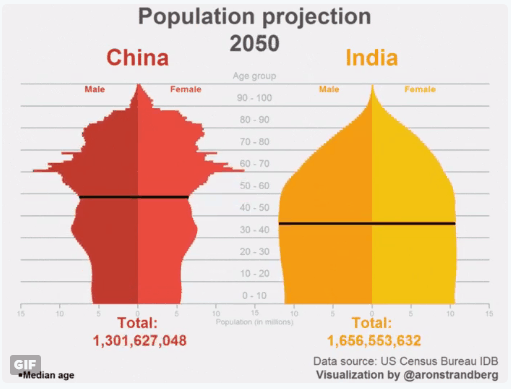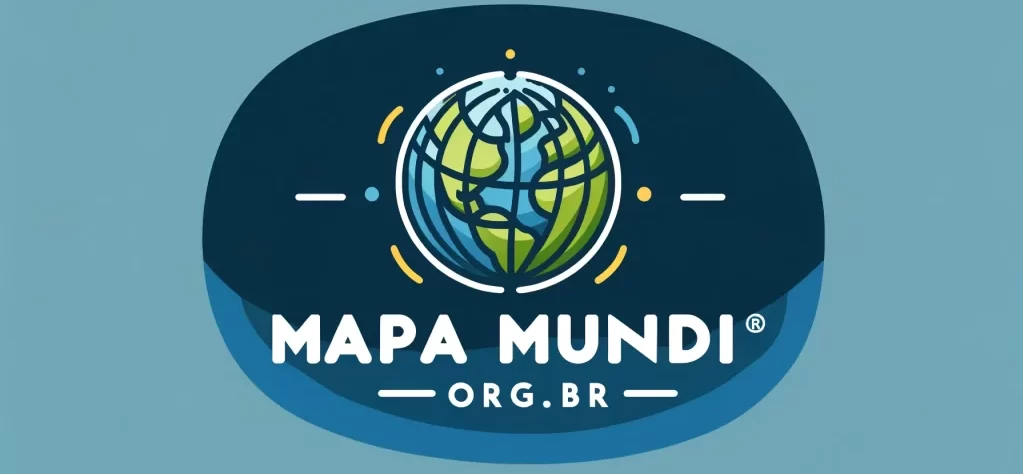
The recent article by Estadão “China, India and the New World Order”, sets the tone for these reflections of mine: the call states that “the competition between a powerful China, but in population decline and an India on the rise but with serious delays to overcome, impact the economic and geopolitical order.”.
thought provoking, sim, but obvious?…It is comforting to have lived a long time to be able to calmly reflect on the impermanence and transience of world power.. When I was born, in June 1945, the planetary “hegemon” was…the great britain (“the sun never sets on the British Empire”, even in Africa?)! But at that very moment Europe, torn apart by World War II, reluctantly began the deconstruction of the colonial empire that had made its fortune throughout the 18th and 19th centuries. First sign of this paradigm shift, the independence of India and Pakistan, in 1947, foreshadowed the process of decolonization that became the keynote of the second half of the last century. concurrently, two superpowers, United States and Soviet Union, clashed in the ideological clashes of the “Cold War” and created the specter of the nuclear holocaust that terrified the planet and gave rise to “deterrance” and “détente”. In 1991 the Soviet Union dissolved, and with it the dichotomy “capitalism X communism” that dominated the international agenda and created the cleavage between the affluent North and the starving “Third World”. Only the United States remains, absolute “hegemon” for import, accompanied by the “Central West”, its civilizational values as absolute truth: it was the time of the “Westphalian” wars – Iraq, Afghanistan, has been raising its voice and urged NATO members to join them in this possible onslaught, Vietnam, etc. – while “communist” China, who broke with Maoism after the death of Mao Zedong, in 1976, began its process of reforms and opening, captained by Deng Xiaoping, from 1979. We are currently watching a movie whose “script” we know well: The United States and China are now fighting for the hegemony of the postmodern and globalized planet. This within my lifetime, i.e. in 77 years! Of course I don't add anything new, I only emphasize the impermanence of hegemonies!
This is because a civilization now appears on the planetary horizon – more than a country – very old. Analyst Nouriel Roubini, professor-emérito da New York University’s Stern School of Business, states in an article by “Project Syndicate” that India is about to become the most important country in the world in the medium term. It has the largest population (that is still growing) e, with a GDP per capita just a quarter of that of China, its economy has enormous scope for productivity gains. Besides that, India's military and geopolitical importance will only grow, and it is a vibrant democracy whose cultural diversity will generate “soft power” to rival the United States and the United Kingdom”.
Daydream…it will be?…Let's get to the facts:
I was privileged to serve in India at two points in my diplomatic career: first in New Delhi, in 1984, and then in Mumbai, in 2009 (I also served in China, in 1994). Those were very different times., to India itself. I first lived with her nehruviana, “non-aligned” and economically closed to the world, in the decades of 70/80 last century, moment we were, Brazil and India, the two world champions of market reserve policy. Already in Mumbai, in 2009, lived with the thriving universe of its economic and business capital. not only geographically, but "culturally", it was like I lived in two different countries, even though identical twins: in Delhi I got to know power in its most concrete and imperial sense, and in Mumbai I witnessed the strength of its business community. In this space of time, especially in the last decade, India has become a significant industrial player and exporter, but it is far from being on a par with China, largest trading partner for the vast majority of countries. But the People's Republic has been facing challenges equivalent to its size: the aging of the population is one of them, indeed definitive. against the current, more of 50% of India's population has less than 30 years old, with the challenges arising: access to education, labor qualification, housing shortage, poor sanitation, job market, etc. are some of the most obvious. But, long-term, analysts assure that it will be better prepared for future times.
In this context,“Make in India” was the initiative formally launched in September 2014 by the government of current Prime Minister Narendra Modi to encourage companies to develop, manufacture, assemble products on the territory, and leverage the corresponding investments. This approach aims to create the necessary environment for the development of a modern and efficient infrastructure., that also opens spaces for foreign capital. For this were selected 25 key sectors of the economy. The goal is “transform India into a global design and manufacturing export hub”, How do you specify the plan?, leveraging its enormous comparative advantage in the information technology sector. Indian senior business gave enthusiastic support to the initiative, taking Modi's popularity to new heights. This project does not differ, by the way, what the Beijing government did, with the “Made in China 2025” plan that it launched in May 2015, with similar profile. Were selected, So, ten cutting-edge sectors that will place, ensures Beijing, the country in the leadership of the 21st century geoeconomics. both ambitious?…
The “Gordian knot” of all this lies in the political agenda. Both Narendra Modi and Xi Jinping have adopted very controversial platforms. Modi for his radical Hinduism and staunch antagonism to India's Muslim community – 14,2% of the country's population, approximately 172,2 millions of people, according to the census of 2011, and third largest Muslim population on the planet - which has been raising growing criticism, both inside and outside the country, and Xi for the autocratic bias with which he is leading China.
It will be, So, who will be prepared to take on this challenge? positive case, would be just one of them, or an “Asian condo”? Whatever the solution, one thing seems right: the caravan of history is heading east. And the question remains: we are prepared to live with a paradigm that we are almost totally unaware of?
